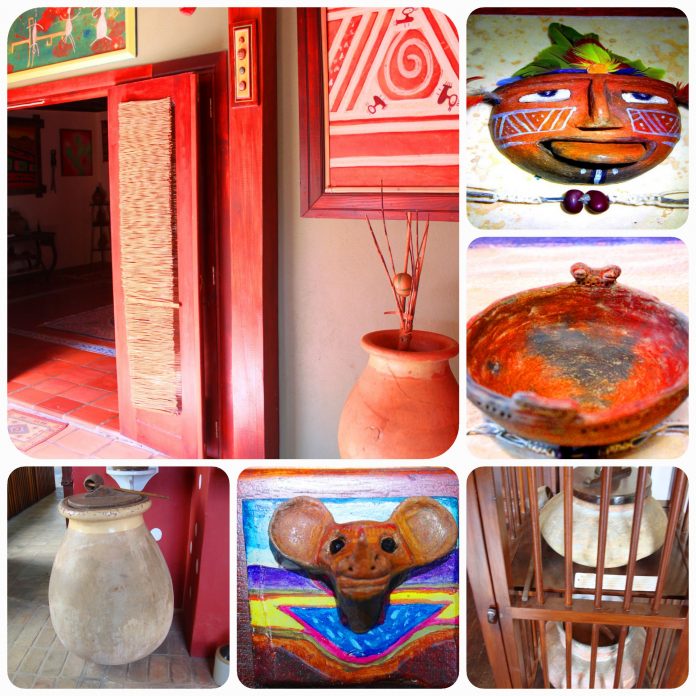Booking a magical glimpse inside Etnia Nativa
Article by Etnia Nativa call us 592 2702 and book your experience!
Etnia Nativa is where you can connect with the mystical aspects of Aruba, its culture, and its traditional heritage. A platform that encourages visiting participants to interact with the Aruba’s unique cultural environment. During this episode, we share how the first inhabitants of our island created and used the earth by crushing, squeezing, rubbing, and beating it into clay until it obtained the desired shape.
Ceramic is the most abundant material recollected by archaeologists on prehistoric sites. The oldest sample dates back to the Neolithic period and is considered one of the great inventions of humanity since it represented a revolutionary discovery when its transformation became a way to record written accounts and be able to manufacture objects to store and transport all kinds of goods such liquids, food, and reliable construction materials.

In Aruba, a series of geometric designs turned out to be unique as ceramic decorations that defined an era, a cultural identity, and a national heritage. Our Caquetian ancestors developed an original style classified as Dabajuroide, named after the nearby city of Dabajuro in Falcón State, Venezuela. These classic designs were known as polychrome, made out of various tones of red, black, and white and their combinations, as well as a variety of forms such as stippling and incision.
Another peculiar and important category is large vessels, which demonstrate great technical skill in their production. Most large vessels were associated with burials but were also used intensively in everyday life to store large quantities of liquids, such as corn beer, honey, jerky seeds, roots, etc.
All vessels were formed by hand using a rolling technique. The largest vessels demonstrate the mastery and excellence of the Dabajuro potters. The decorated ceramic pieces were finer, thinner, and of great quality. It is evident that pottery was very important to the sedentary Amerindians of the Ceramic Period. Clay was not only used for different tasks, as mentioned above, but it was also used to build their dwellings. It was applied in funerary practices, agro-religious traditions, and shamanic ceremonies. We can conclude from the many shreds of evidence that it had a very important place in the preparation of food and rituals and was a central part of their political organization and tribal way of life.
Two main decoration techniques highlight their work. The first one was by painting designs using agave pencils, while the second was by applique modeling. In some cases, a dark pigment was applied to the much lighter background of the container. Colors such as brown, reddish brown, red, and black were used by grinding ocher. The other decoration technique was modeling. From simple motifs, such as corrugated edges and rings with additional appliqués around the edge of the vessel, to more complicated motifs, such as stylized animal heads such as frogs, bats, birds, turtles, etc. Human heads, anthropomorphic effigies, vessels, and complete stylized sculptures of animals were also produced. It is evident that pottery was very important for the sedentary Amerindians of the agro-ceramic period, venerated as a gift of knowledge obtained from mother earth.
Since ancient times, working with clay has been a work of self-discovery where creativity emerges through emotion and fluidity, a communicative instrument liberated from “my soul to yours.” At Etnia Nativa, we interpret the designs of the islanders and transform local clay into fantastic ceramic vessels and ritual objects. Using artisan techniques, we select high-quality material and prepare it to be molded by hand.
If you want to explore Aruba’s deep heritage, Etnia Nativa is a place to connect. It’s a private residence that integrates natural and reused materials and is full of art, culture, and island heritage. Each visitor is guided through an authentic encounter with the owner-builder and cultural expert. Book a magical look inside Etnia Nativa: WhatsApp +297 592 2702 etnianativa03@gmail.com



















